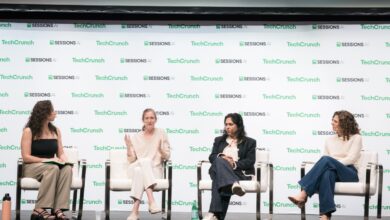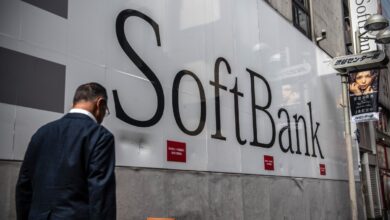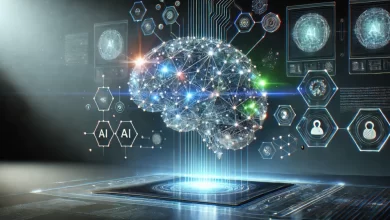The Tension Between Microsoft and OpenAI: What It Means for the Future of AI

In recent years Microsoft And Open AI have emerged as leaders in the field of artificial intelligence (AI), and their partnership has defined much of the industry’s progress. Microsoft’s significant investments of almost $14 billion OpenAI provided access to Azure’s extensive computing resources since 2019, enabling rapid advancements in AI model development. These models powered Microsoft’s Azure services and became part of products like Office and Bing. This brings a future where AI helps increase productivity and guides smarter business decisions.
Microsoft’s partnership with OpenAI is becoming increasingly complicated as both companies pursue different goals. OpenAI’s growing need for additional funding and computing power has led to questions about Microsoft’s role and potential interest in a more profitable, future version of OpenAI. At the same time, Microsoft has started recruiting talent from Inflection AI, a rival to OpenAI, indicating that Microsoft may be looking to diversify its AI capabilities.
To add to the complexity, OpenAI recently introduced a satellite office in Bellevuenot far from Microsoft headquarters. This proximity could facilitate collaboration, but also make it easier for employees to move between companies. Microsoft, meanwhile, appears focused on strengthening its internal AI projects, a strategy that could help the company reduce its dependence on OpenAI in the future.
While OpenAI CEO Sam Altman remains optimistic and the partnership is a “bromance”, recent developments indicate a shift towards a more competitive relationship. While both companies are reassessing their priorities and strategies, the nature of their partnership is yet to be determined.
The beginning of the Microsoft-OpenAI partnership
The collaboration between Microsoft and OpenAI began with a shared goal of bringing advanced AI to the business world. Microsoft recognized early on the potential of OpenAI’s models, such as GPT-2 And DALL-Eto redefine business applications at scale. By investing significantly and offering its Azure platform, Microsoft has gained an edge over other cloud providers and strengthened its commitment to AI. With OpenAI’s language and imaging capabilities, Azure became a powerful tool for delivering evolving AI solutions to Microsoft’s enterprise customers, improving its competitive position.
For OpenAI, the partnership meant access to the resources needed to expand beyond its original nonprofit model. By switching to a limited-profit structure, OpenAI was able to secure large investments and focus on ambitious projects such as GPT-3 and GPT-4. Microsoft’s support gave OpenAI the computing power to expand beyond traditional boundaries, enabling rapid growth and the creation of technology that could reach the commercial market.
For Microsoft, this partnership provided a way to integrate advanced AI features into its products. OpenAI’s technology brought unique capabilities to Microsoft’s cloud computing, business intelligence and productivity offerings. Together they could explore applications beyond basic machine learning, from language understanding to complex decision-making systems. However, as OpenAI began to develop its commercial path, its focus began to differ from Microsoft’s, gradually turning a collaborative effort into a competitive one.
Financial and strategic tensions between Microsoft and OpenAI
Initially, Microsoft’s investments in OpenAI were a win-win situation, as Microsoft provided critical resources for OpenAI’s growth while OpenAI’s innovations improved Microsoft’s products. However, OpenAI’s recent efforts toward greater independence have changed this dynamic, causing both companies to review their financial and strategic agreements.
Microsoft’s major investment came with the expectation that it would have an impact on the direction of OpenAI, especially given the breadth of support. Although OpenAI operates under a limited-profit model, Microsoft anticipated a more active role through equity or operational input. Yet OpenAI’s desire for autonomy complicates this setup, leading both companies to seek financial guidance to manage this evolving relationship.
The shift from OpenAI to profitability While we remain committed to ethical AI, this also creates pressure. Balancing profitability with Microsoft’s expectations can be a challenge. As OpenAI’s models gain value, Microsoft’s interest in maintaining influence grows, highlighting the fine line between OpenAI’s mission-driven approach and the commercial interests of a major investor.
The launch of SearchGPT has increased this tension even further. Microsoft had integrated OpenAI’s language models into Bing for a more interactive search experience, but SearchGPT signals OpenAI’s intention to serve users directly outside of Microsoft’s ecosystem. Unlike Bing, which combines search results with AI, SearchGPT offers a more conversational and engaging experience.
This move puts OpenAI and Microsoft in direct competition. SearchGPT could challenge Bing’s market share and disrupt Microsoft’s vision of AI-powered search. While OpenAI’s independent approach aligns with its mission to bring AI directly to users, it also highlights a growing divide with Microsoft. This rivalry between Bing and SearchGPT also signals a shift in OpenAI’s strategy toward consumer-facing applications.
By entering the search market, OpenAI is signaling a broader intention to create AI products for direct user engagement, moving away from exclusive corporate partnerships. This could transform AI search, attracting users who prefer interactive, AI-driven responses and pushing Bing to adapt its offerings to stay competitive.
Balance between innovation and exclusivity
The collaboration between Microsoft and OpenAI brings together two different approaches: Microsoft favors proprietary systems, while OpenAI moves toward open source models. Microsoft has integrated OpenAI’s technology into its products, such as Bing and Microsoft Office, creating exclusive, secure solutions that meet the needs of enterprise customers, especially those in regulated industries. This setup allows Microsoft to offer custom, controlled AI tools, building trust among companies that prioritize security and reliability.
On the other hand, OpenAI’s commitment to open source development is about transparency and collaboration. By making its models open, OpenAI invites developers around the world to contribute, adapt and benefit from the technology, which enables faster improvements and broader accessibility. This approach encourages a steady stream of community-driven innovation and adaptability, giving OpenAI’s tools flexibility and reaching beyond exclusive platforms.
However, this difference in direction also causes some tension. As OpenAI continues to expand its open source offerings, developers and businesses could gain access to similar AI tools outside of Microsoft’s Azure ecosystem, potentially reducing the exclusivity Microsoft gains through its partnership. This raises questions about how Microsoft can maintain its competitive advantage and continue to deliver unique value in its partnership with OpenAI. Finding the right balance between these open and closed approaches will be essential as the partnership evolves, combining OpenAI’s rapidly evolving collaboration model with Microsoft’s secure, business-focused solutions.
What this break means for the AI industry
The evolving relationship between Microsoft and OpenAI has implications beyond their partnership; it could influence the future direction of the entire AI industry. In the beginning, their collaboration was a strong example of how AI could improve business applications, especially through Microsoft platforms like Azure and Office. With both companies pursuing different goals, the AI community and enterprise customers are facing a new period of uncertainty.
For companies that rely on Azure’s AI tools, any shift in this partnership raises concerns about the future. If OpenAI chooses to support platforms outside of Microsoft, customers may want to consider alternatives such as Google Cloud or Amazon Web Services, which also advance their own AI capabilities. OpenAI’s focus on open source development drives transparency and community engagement, but also brings new challenges around data security and ethical use. Reaching a broader audience may require OpenAI to address issues of AI bias and transparency in its models, which will be crucial to maintaining its reputation as a responsible AI leader.
This situation also highlights a broader challenge of balancing commercial growth with ethical responsibility. As OpenAI transitioned from a nonprofit to a limited for-profit entity, it faced new complexities in managing both funding and ethical standards. How Microsoft and OpenAI navigate these priorities could set important precedents for future AI collaborations as the industry watches how they balance transparency with commercial interests.
Looking ahead, several outcomes could change their path. One option is a compromise, where both companies adjust their partnership terms to better reflect their evolving priorities. This can bring clearer boundaries around product ownership or influence, providing stability while allowing the pursuit of specific interests. Another possible outcome is a more flexible arrangement, where Microsoft continues to support OpenAI but gives it more freedom to develop open source and consumer-facing projects. This would give OpenAI more independence while maintaining some collaboration.
In a more drastic scenario, Microsoft and OpenAI could part ways completely, each focusing on different markets and customer needs. Such a split will lead to increased competition, with both companies aiming to further develop AI technology on their terms. Whichever path they choose, the decision will have a significant impact on the AI industry and shape the way companies and developers interact with AI tools in the future.
The bottom line
The evolving partnership between Microsoft and OpenAI captures the current challenges and opportunities in AI. As each company determines its path—Microsoft focusing on exclusive, enterprise-focused solutions and OpenAI pushing for open-source, accessible innovation—their relationship highlights a growing divide between control and openness in AI development. These choices will affect companies, developers and users alike. Whether they choose to collaborate, compete, or find a middle ground, Microsoft and OpenAI’s next steps will likely shape the future of AI and influence how we interact with and benefit from this powerful technology.






